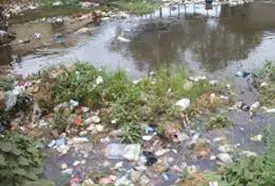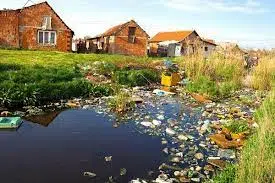Chlorine Dosing System
A chlorine dosing system is a method of disinfecting water by introducing chlorine into the water supply. Chlorine is a widely used disinfectant that effectively kills or inactivates bacteria, viruses, and other microorganisms present in water, helping to address problems of water supply and waterborne diseases. The chlorine dosing system is particularly important in areas where water conditions may be compromised, leading to contamination and the risk of bacterial infections.
One common source of water contamination is grey water, which refers to wastewater generated from domestic activities such as bathing, laundry, and dishwashing. Grey water may contain bacteria and other pathogens that can cause infections if not properly treated. By utilizing a chlorine dosing system, the grey water can be effectively disinfected, reducing the risk of waterborne diseases and bacterial infections.
Water Pollution
Water pollution refers to the contamination or degradation of water bodies, such as rivers, lakes, oceans, and groundwater, due to the introduction of harmful substances or pollutants. It occurs when pollutants, including chemicals, industrial waste, sewage, agricultural runoff, oil spills, and various other contaminants, are released into water sources, thereby compromising their quality and making them unfit for their intended uses.
These pollutants can alter the physical, chemical, and biological properties of water, resulting in negative impacts on aquatic ecosystems, human health, and the environment as a whole. Water pollution can occur through direct discharges into water bodies, as well as through runoff from land, atmospheric deposition, and groundwater contamination.
The effects of water pollution are far-reaching and can include the destruction of aquatic habitats, depletion of oxygen levels, harm to aquatic organisms, spread of waterborne diseases, degradation of water quality, loss of biodiversity, disruption of the food chain, and economic consequences. Water pollution poses a significant threat to both the natural environment and human societies, necessitating measures to prevent, control, and mitigate pollution through improved waste management practices, regulations, and public awareness.




Water Pollution Effects Due to Sewage Mixing in Water
Mixing of sewage with water bodies has numerous detrimental effects, leading to severe water pollution. Sewage contains a range of harmful substances, including pathogens, nutrients, organic matter, and chemicals. When sewage enters water bodies such as rivers, lakes, or oceans, it results in the following effects:
Firstly, water contamination occurs as pollutants from sewage contaminate the water. Pathogens present in sewage, such as bacteria and viruses, pose a significant risk to human health, causing waterborne diseases like cholera, dysentery, and gastroenteritis.
Secondly, sewage pollution leads to the depletion of oxygen in water bodies. The organic matter present in sewage decomposes, consuming dissolved oxygen and creating oxygen-depleted zones that harm aquatic life. Fish and other organisms may die due to oxygen depletion or the toxicity of pollutants.
Thirdly, the excessive nutrients, primarily nitrogen and phosphorus, present in sewage cause eutrophication. This leads to the overgrowth of algae and aquatic plants, blocking sunlight and disrupting the natural balance of ecosystems. It results in degraded water quality, reduced biodiversity, and the formation of harmful algal blooms.
Furthermore, sewage pollution creates aesthetic issues with foul odors like bad smell in water and unsightly appearances in affected water bodies. This negatively impacts tourism, recreational activities, and the overall well-being of local communities.
Lastly, the economic impacts of sewage pollution are significant. The costs associated with treating polluted water, healthcare expenses due to waterborne diseases, and the loss of income from tourism and recreational sectors all burden local economies.
To mitigate sewage pollution, it is crucial to invest in wastewater treatment infrastructure, implement proper sanitation practices, and raise public awareness about the importance of sewage management and water conservation
Bacterial infections can manifest in various parts of the body, including the eyes and nails. Bacterial infections in the eye, such as conjunctivitis, can be caused by exposure to contaminated water. The use of a chlorine dosing system in water treatment helps ensure that the water supply is free from harmful bacteria that could lead to eye infections.
Similarly, bacterial infections of the nail, such as paronychia, can occur when bacteria enter the skin around the nail. Water contaminated with bacteria poses a risk for such infections. By implementing chlorine disinfection through a dosing system, the water used for activities like handwashing or nail care can be effectively treated, minimizing the risk of bacterial infections.
Overall, a properly functioning chlorine dosing system plays a crucial role in reducing the incidence of waterborne diseases caused by bacterial contamination. It helps address the problems associated with water supply, improves water conditions, and safeguards against the transmission of bacterial infections, including those affecting the eyes and nails. Regular disinfection with chlorine helps ensure that water is safe for various uses, protecting public health and preventing the spread of major 4 water borne diseases.
